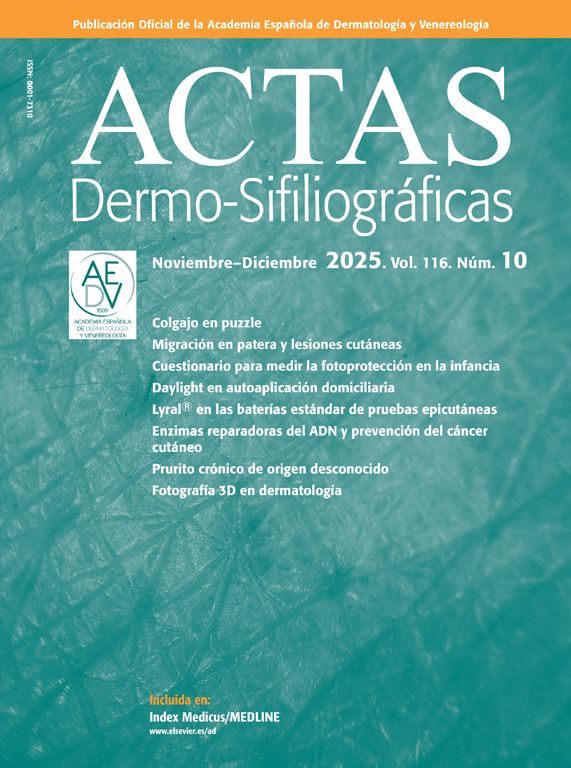An 82-year-old woman presented with hyperkeratotic erythrodermia and onyxis, involving the face (Fig. 1A), scalp, and palmoplantar region. She reported no comorbidities or personal history of other skin diseases. The lesions were completely asymptomatic, and the patient did not report any painful or itchy symptoms. The lesions had been present for approximately 3 months, progressively worsening despite therapy with emollients initially and later with topical and oral corticosteroids (oral methylprednisolone 16mg).
The visualization of characteristic burrows during dermoscopic examination of the lesions (Fig. 1B, mites indicated by arrows) allowed us to establish a diagnosis of crusted scabies (Norwegian scabies). Dermoscopic evaluation should be conducted in regions with less hyperkeratosis, and the identification of the “jet in the sky” sign at the subungual or interdigital region is crucial for diagnosis.
Among the various Sarcoptes scabiei variants, crusted (Norwegian) scabies stands out as a highly contagious form, especially affecting immunocompromised individuals, which promotes widespread parasite proliferation. The occasional complete absence of itching and the extensive involvement of the face and scalp, distinguishing it from the classic clinical form, can lead to delayed diagnosis. Frequent misdiagnosis with other conditions, such as eczema, psoriasis rupioides, seborrheic dermatitis, or fungal infections, can also result in incorrect or even worsening treatments of the disease.






